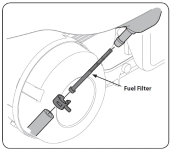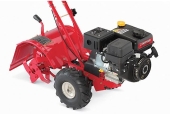
 2
2




To be is to do …Kant
To do is to be ..Nietzsche
Do be do be do…Sinatra
Scooby dooby do …St. Thomas
 9
9




Country oriented nerd with primary interests in alternate energy in particular solar. Dabble in gardening, trees, cob, soil building and a host of others.
 8
8




Air and opportunity are all that stand between you and realizing your dreams!
 6
6




Air and opportunity are all that stand between you and realizing your dreams!






 6
6




Country oriented nerd with primary interests in alternate energy in particular solar. Dabble in gardening, trees, cob, soil building and a host of others.
 6
6




 6
6




 4
4




Air and opportunity are all that stand between you and realizing your dreams!
 4
4




Every day on this side of the grass is a good day. The first on the other side will be even better.
 4
4




Rusty Ford wrote:I'm gonna give an answer that falls right smack in the middle of all of these. Pull the bowl off the bottom of the carburetor, there is a float inside that moves up and down with fuel. It has a pin as a hinge, and a needle just in front of the hinge that shuts fuel off when the float rises. Move that float up and down, and spray some carb cleaner in the needle area with the float all the way down. Make sure it moves up and down freely. This would be a simple attempt to begin with without having to go through too much hassle.
Air and opportunity are all that stand between you and realizing your dreams!
 4
4




Air and opportunity are all that stand between you and realizing your dreams!
 6
6




John F Dean wrote: What do I do next?
 4
4




To be is to do …Kant
To do is to be ..Nietzsche
Do be do be do…Sinatra
Scooby dooby do …St. Thomas
 1
1




Jack Edmondson wrote:
John F Dean wrote: What do I do next?
John that is symptomatic of a carb that has an idle jet clogged. Happens to me every spring. Any gas, especially the crap we have now with all the corn in it, left anywhere in the carb turns to a solid and plugs small oraficaces. Best to have the carb pulled off and cleaned. One can do it themselves but it involves some nasty chemicals. The pros are set up to do carb cleaning and it brings in a lot of business in the spring especially. (I have a mower in the garage doing the same thing.) The idle jet circit is very small and easy to plug.
If you have the make and model of the engine, I can find some info on that it would take to clean or replace yourself. Otherwise pay a small engine guy to soak and clean the carb.
Air and opportunity are all that stand between you and realizing your dreams!
 6
6




“The most important decision we make is whether we believe we live in a friendly or hostile universe.”― Albert Einstein
 7
7




John Weiland wrote:Just wanted to ask a quick question on the subject of carb design and cleaning. With the 'bad' gas issue already noted, I must admit some (happy) astonishment at how little I've had to baby the Honda/Knock-offs in this regard vs. my Briggs and snowblower Tecumseh's. The one Briggs that I still use is a 3.5 hp 'classic' push mower for which I need to replace the diaphram pump each year. I'm actually surprised that it's still running after 15 years of use. The Honda GX160 on my semi-trash pump, the Subaru on my backhoe, and the 'Predator' (Harbor Freight) on my rototiller have needed minimal cleaning efforts on my part by comparison. Are these Japanese and knock-off engines using a similar carb in all cases? Why do they not seem to foul as much? In all cases, I use a fuel stabilizer for storage or just close the fuel line at the end of a season and let the engine stall out after using up the gas remaining in the carb. Thanks!....
Air and opportunity are all that stand between you and realizing your dreams!






 3
3




larry kidd wrote:
John Weiland wrote:Just wanted to ask a quick question on the subject of carb design and cleaning. With the 'bad' gas issue already noted, I must admit some (happy) astonishment at how little I've had to baby the Honda/Knock-offs in this regard vs. my Briggs and snowblower Tecumseh's. The one Briggs that I still use is a 3.5 hp 'classic' push mower for which I need to replace the diaphram pump each year. I'm actually surprised that it's still running after 15 years of use. The Honda GX160 on my semi-trash pump, the Subaru on my backhoe, and the 'Predator' (Harbor Freight) on my rototiller have needed minimal cleaning efforts on my part by comparison. Are these Japanese and knock-off engines using a similar carb in all cases? Why do they not seem to foul as much? In all cases, I use a fuel stabilizer for storage or just close the fuel line at the end of a season and let the engine stall out after using up the gas remaining in the carb. Thanks!....
After 40+ years working on stuff I have wondered how the Honda's and clones have less trouble myself. I have two or three theories 1) better metal 2) less small passages 3) the shape of the passages overall, I have to wonder if they aren't slightly tapered getting larger as they go in. Which would make them less likely to clog.
Country oriented nerd with primary interests in alternate energy in particular solar. Dabble in gardening, trees, cob, soil building and a host of others.
 6
6






| I agree. Here's the link: http://stoves2.com |






